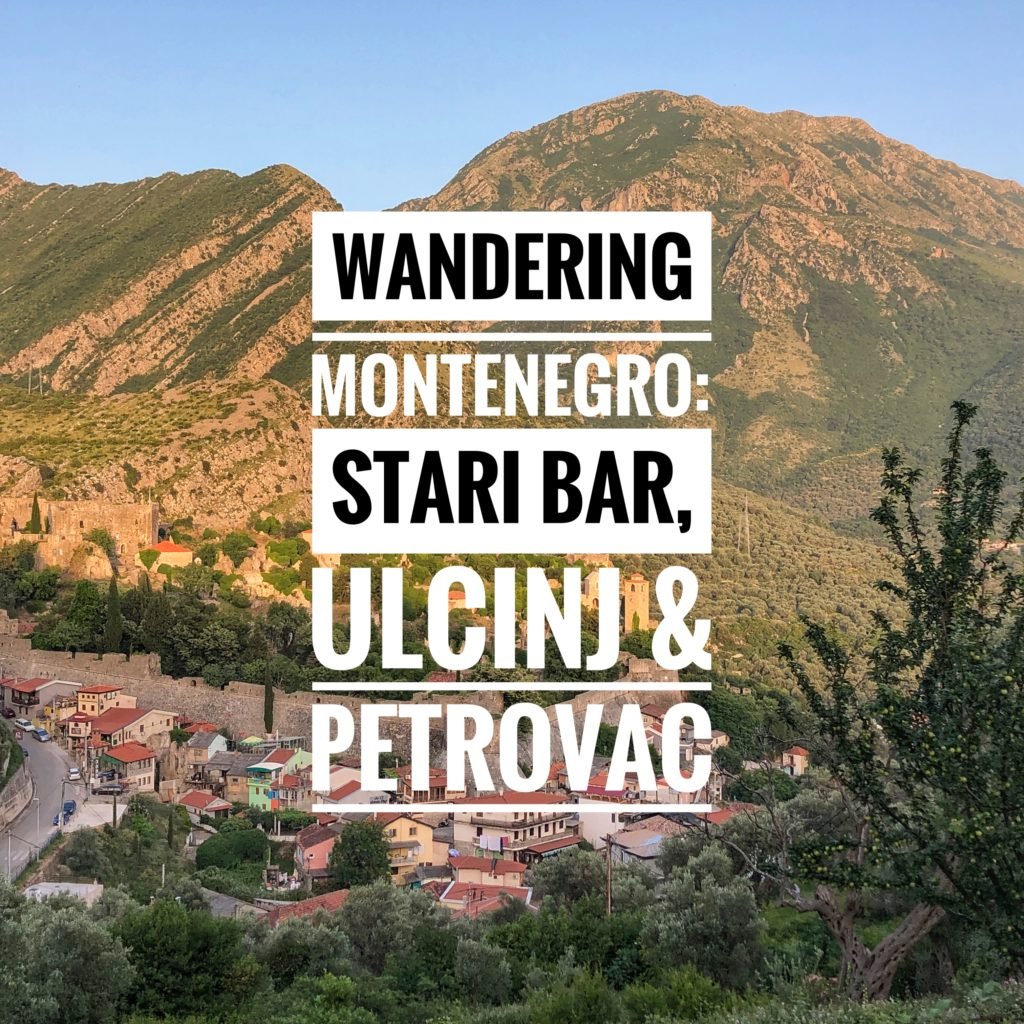
We were sad to leave Albania, and head north after nearly four weeks there. The rawness of the land and people in Albania wooed our explorer genes in ways we didn’t know they could be wooed. Crossing the border into Montenegro from Albania was a quick transition into a new land that seemed, just a little… too polished at first. This feeling was especially perplexing to us since Montenegro occupied a slot on our top ten list of countries that fit the profile of places to open our business in. That said, we were more than ready to dig a little deeper to try to capture and explore the spirit of the Montenegrin coast.
Our first stop was the border town of Ulcinj. We were pleasantly surprised to find that although we had left Albania, 70% of the residents from Ulcinj are of Albanian descent. They were incorporated into the former Yugoslavia after the borders were redrawn following WWII. Oddly too, Albanian is still commonly spoken all over the area. It became easy to slip back into our comfortable Albanian “fluency” of please’s, thank you’s, good morning’s met with cheek-to-cheek smiles by the locals! Except of course when we goofed, and mistakenly said thank you in Albanian to a Montenegrin. He got rather pissy with us for our innocent slip of the language. Oops. We’re quickly learning the nationalistic tensions of the Balkans don’t have much wiggle room for generalities.
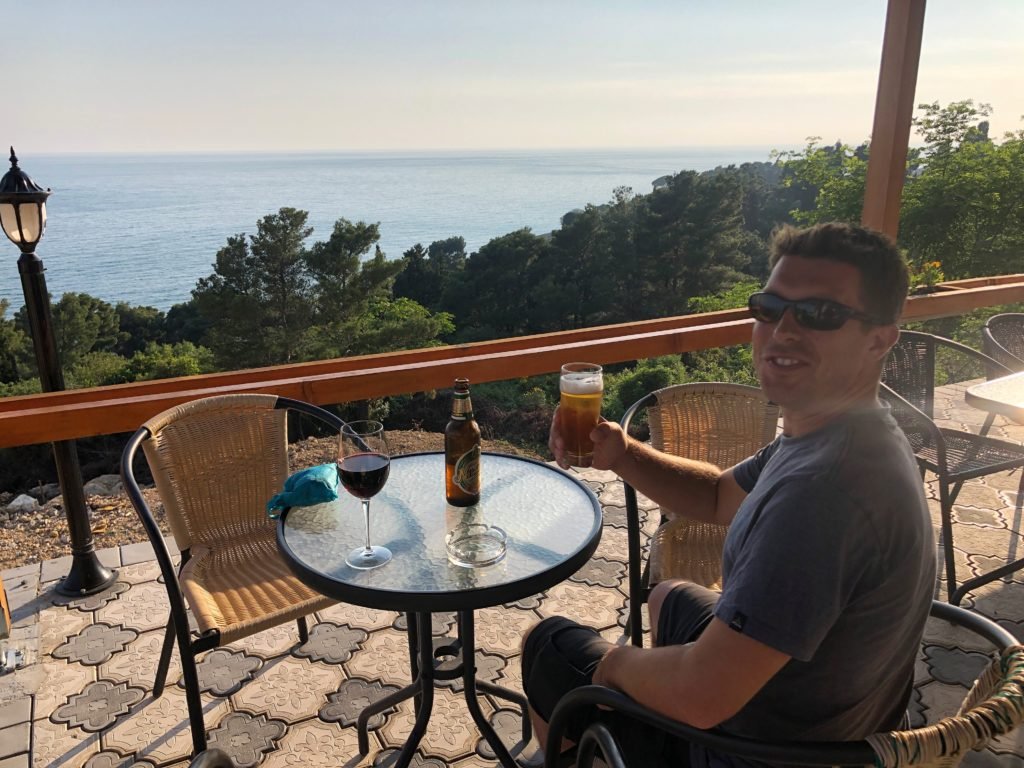
Okay then, time to learn Montenegrin? We’ve heard, and Google translate showed us that many of the words are very close to being the same if not the same between Croatian, Bosnian, and the Serbian languages. Many many more similarities than huge differences anyhow. We also used mostly the same words interchangeably in Montenegro, Croatia, Bosnia, and Serbia. Yet, each country asserts that it has its own distinct language, and is very much apart from the others. For a traveler, this is unusual to say the least. Almost as if you went to Canada and they spoke Canadian, Australia and they spoke Australian, but of course it’s all just simply English! Ecuador and Peru…all Spanish! But this obscure language lesson, was indeed our first lesson on the many complexities lurking in this region of the Balkans.
Backtracking a little… leaving Albania and heading to Montenegro was…confusing. It took us several hours to figure out when the bus was actually coming to Shkoder, and when it finally showed and we climbed aboard our passports were quickly collected by one man and then passed off to another. The bus was still in Shkoder, we weren’t anywhere near the border. We both failed to see the exact transaction that had just occurred with our passports. One man walked away, the other was the driver. Hmmmm. Did the driver get our passports, or did our passports just go for a walk with the man who fled the scene? Okay, so, of course Mandy sat quietly for the 45-minute ride to the border developing worst-case scenario strategies in her head while Greg reassured her it was nothing to worry about. Sure enough, everything was totally fine with our passports. The driver had them. When we arrived to the border, we encountered a horrific queue going into Montenegro. Then, like magic, our mini bus seemed to fly above the taxis, tour busses, and regular masses to pull ungracefully forward up to the front of the line. Well, remember the suspicious guy who collected our passports before we left Shkoder? Turns out he had zoomed off ahead of the bus and gotten in the queue at the border. Then when we arrived he allowed us to cut ahead of him, at the front! This little covert and crafty operation must have saved us at least an hour in the queque. Sneaky…but brilliant.
Stamped, approved and official we quickly rolled into Montenegro in a record 10-minutes. What an amazing bus driver! But, upon arriving in Ulcinj, the real workout began as we grunted and sweated for 40 minutes up a mountain to make it to our accommodation. Did we mention it’s mountainous in the Balkans?! Ah, but we finally persevered and celebrated with a view and a drink. It may be an Albanian town, but it didn’t have Albanian prices. A beer, glass of wine, Greek salad and omelet cost 9€. Okay, still not bad… but Albania would’ve been half that.
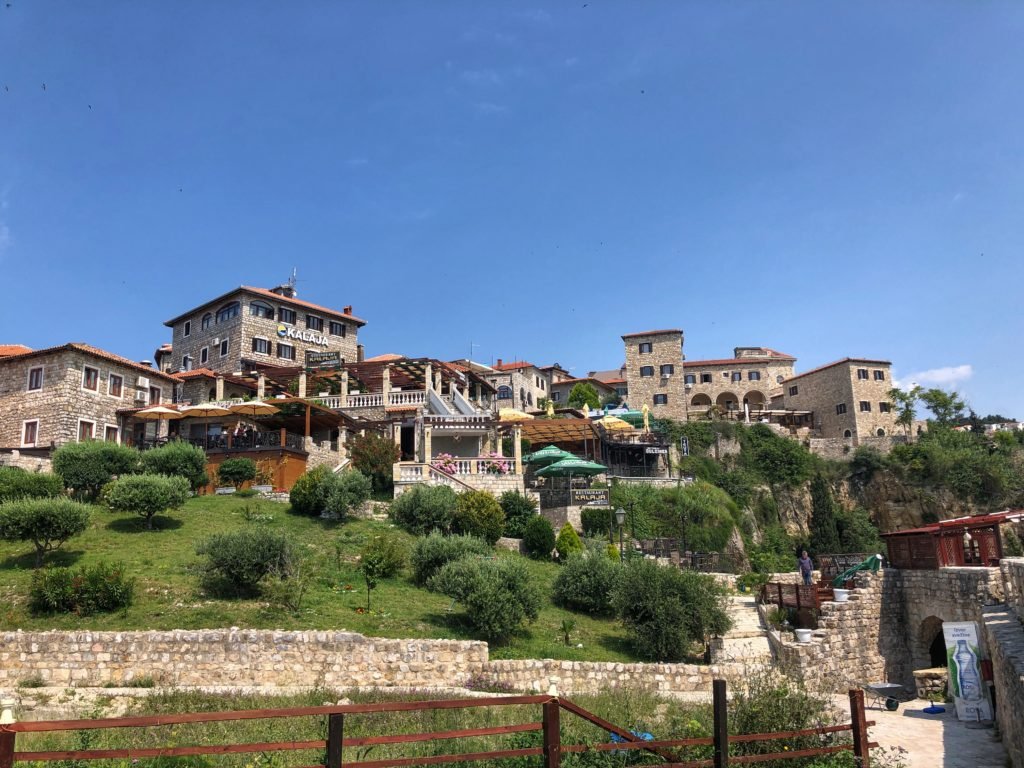
The new “old” town of Ulcinj is not a showstopper like some of the more picturesque Venetian influenced towns we would find in Montenegro. Our outdated guidebook called it ramshackled, which makes sense considering it’s one of the oldest towns on the Adriatic coast at 2000 years. Clearly it’s had a facelift in recent years. It’s quite small, and could easily be wandered in 20 minutes. But definitely worth checking out as it did have some pleasant cobbled narrow streets and the fortification over the Mediterranean sea cliffs is a very dramatic setting. They’ve done a nice job restoring it, and is a lovely distraction from the modern villas and resorts of concrete and glass found in the rest of Ulcinj proper.
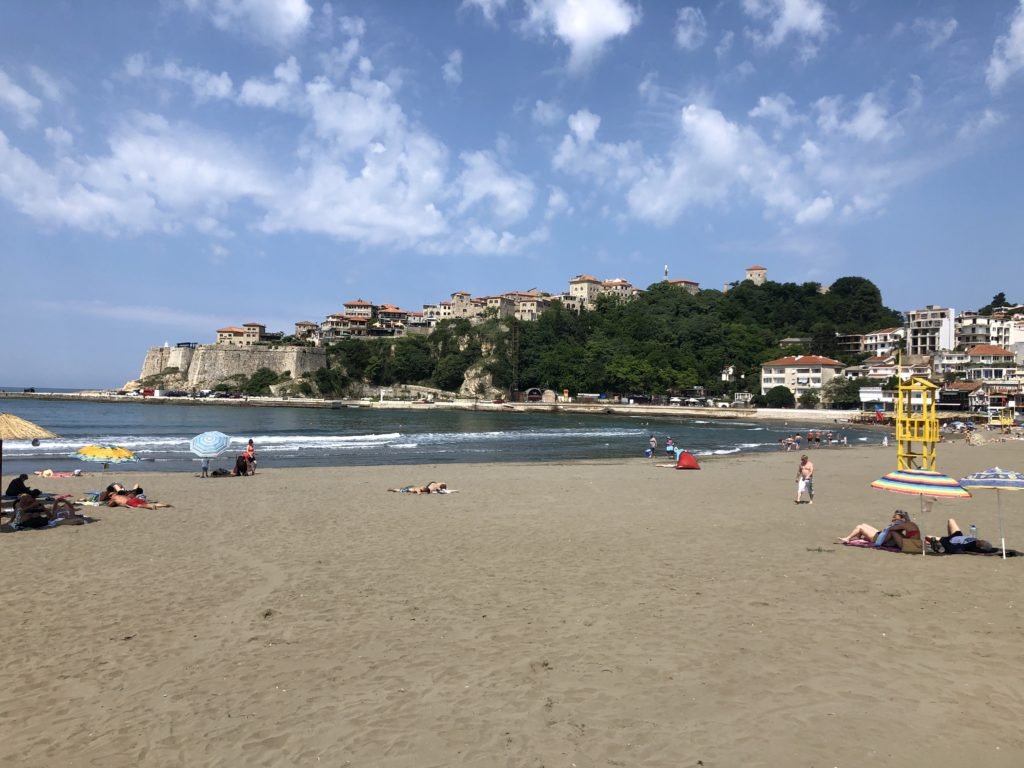
The small beach in Ulcinj with the Old Town in the background. Still, somehow untouristy and quiet. It clearly won’t stay like this for long.
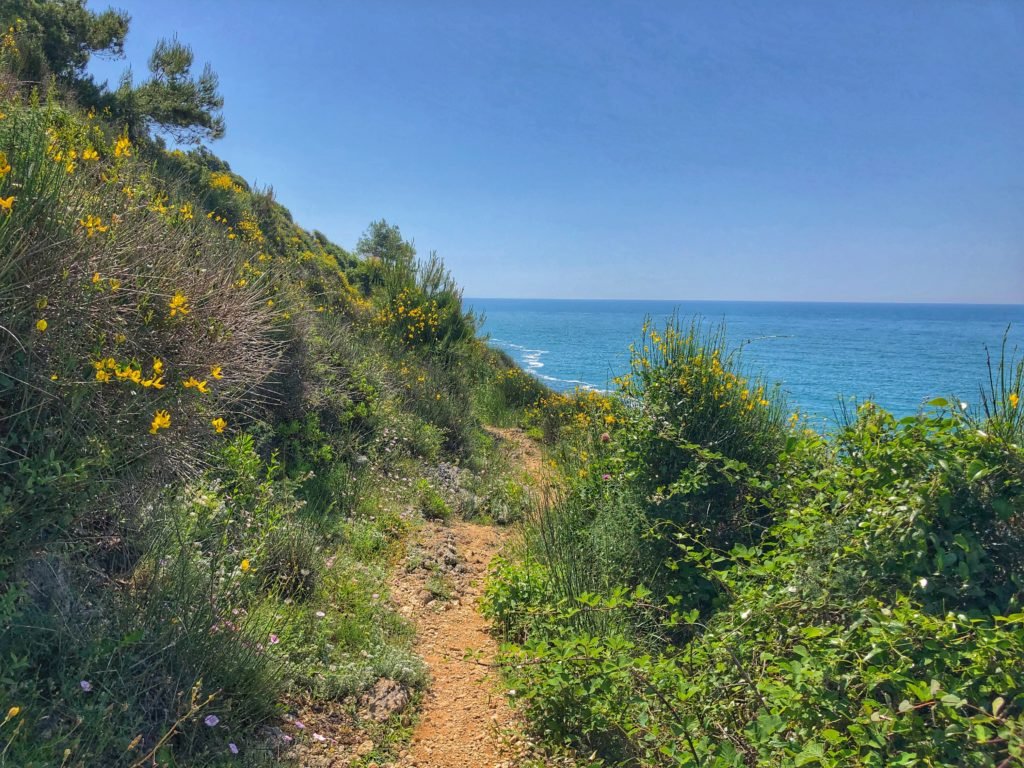
The main attraction near Ulcinj is the “Big Beach” (Velika Plaza), about 6k away. Despite the fact it was June, no buses were running from Ulcinj to Velika Plaza. So, we found a trail on our amazing Mapy.cz app and planned to just walk the 6k. Walking down the seaside paved road towards the “Ladies Beach” (yes, only ladies allowed here), which then transitioned into a ‘mostly’ pleasant wooded dirt trail that meandered above the cliffs and sea. We say “mostly” pleasant because there’s no one on trail but you…and… some slithering sticks. Crap! Not sticks. Snakes…Vipers! A pit of them! But, yes they are more scared of you than you them. Just make sure to grab a (real) stick and stomp loudly to give them a good warning that you’re on your way through as you go.
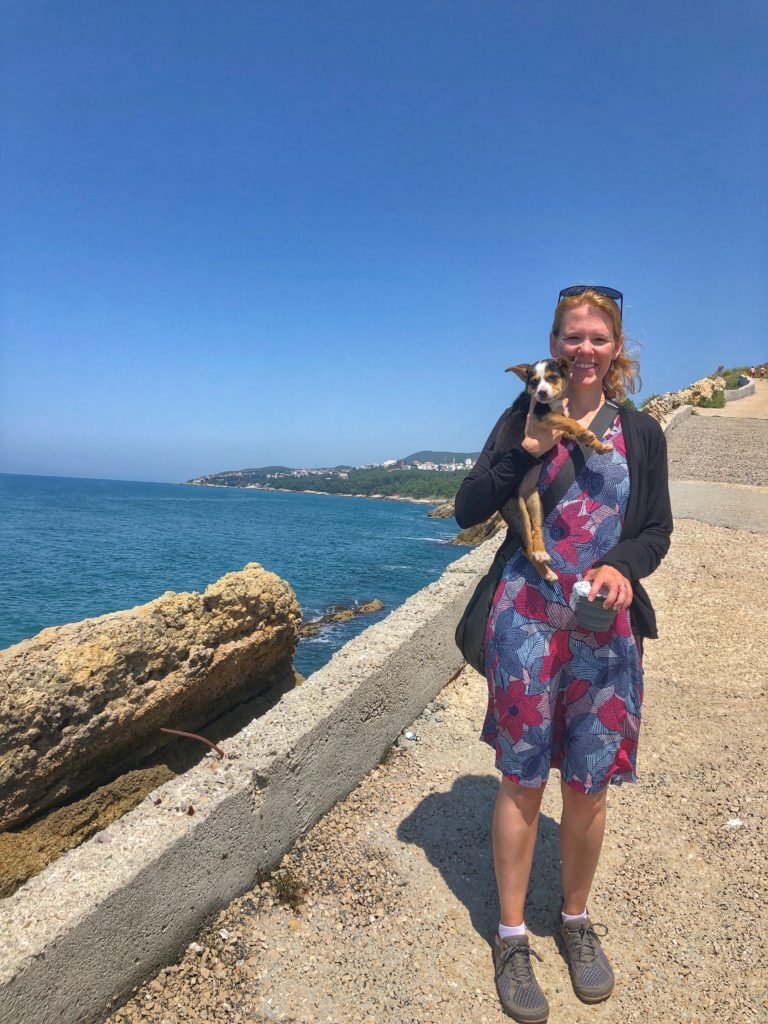
Also be sure to grab ahold of any mischievous pups who happen to wander onto your path…obviously this poor baby girl had no idea of the dangers that lurk all around her. We named her Albanie, she partnered with us for the whole day! It was so incredibly hard not to toss her in our backpack, but she eventually wandered off on her own once she got a whiff of a fisherman’s fast food shack.
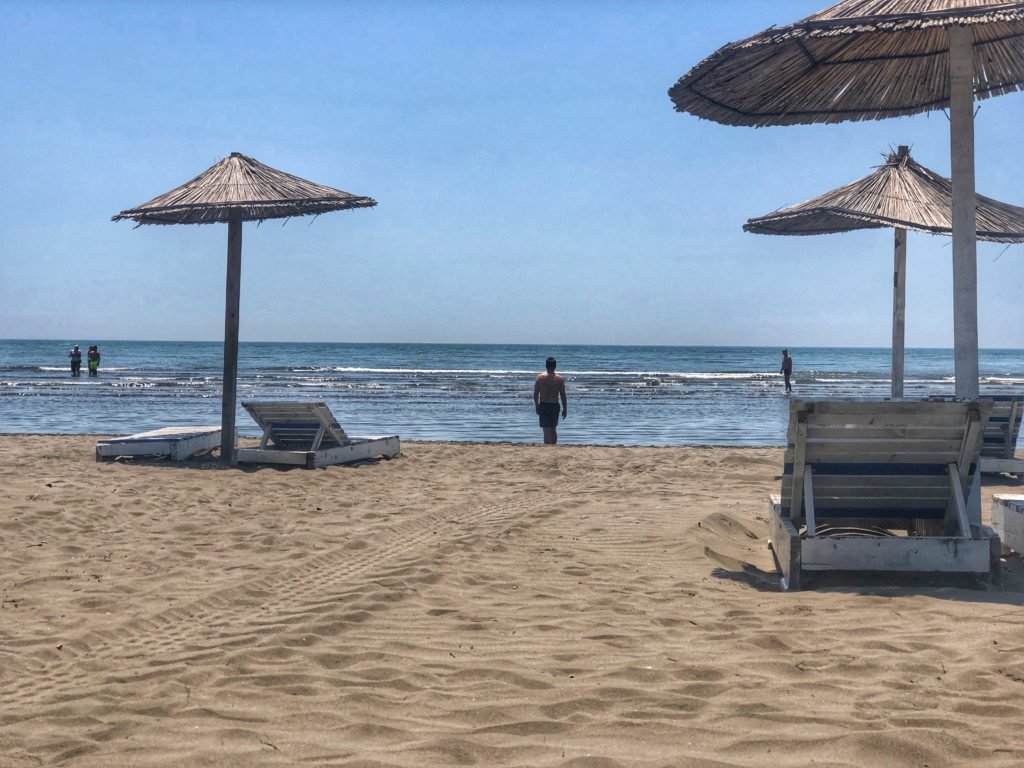
Greg wanders into the now pleasantly swimmable waters at Velika Plaza. Arriving to Velika Plaza we were relieved to emerge from the bush and let our viper guard down on (free/unguarded) beach chairs and umbrellas. Oh, and very few people. Velika Plaza is a whopper of a beach. At 8-miles long it’s one of the biggest in Europe. The mini beach clubs set along it seem to swipe names from mega beach destinations from all around the world like Florida Beach, Havana Beach, and Tropicana Beach. But in reality there isn’t much to Velika Plaza to warrant such grandiose naming schemes. Most of it is small scale resorts, beach bars, music stages, and restaurants. It may be a different vibe on a hot August day, but on the early June day when we arrived, the party had definitely NOT started.
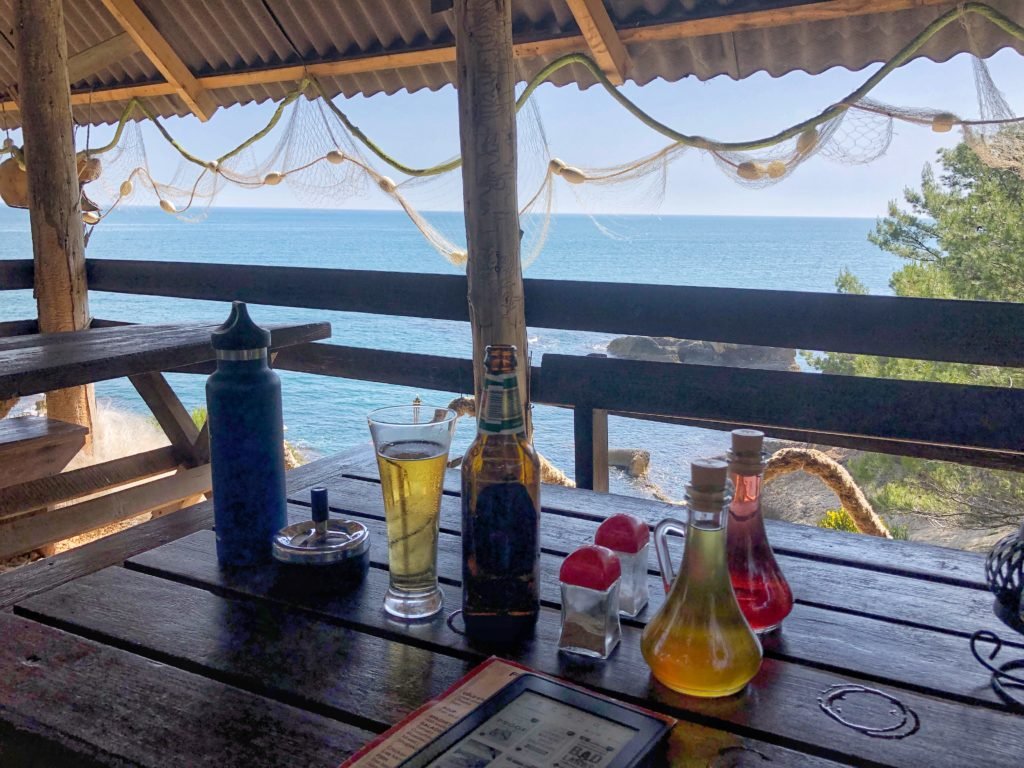
On the walk back to Ulcinj, we stopped at tiny Ribarska Konoba, a fish hut conveniently (for us) deposited on the side of the trail. Beers and of course, fish soup. Yummy. And quite a view. But also quite overpriced for what we got (10.60€). The service didn’t quite fit the vibe either and seemed a bit grumpy. We think we woke him from a siesta snooze, and this was the guy who sternly scolded us in Montenegrin when we muttered a “thank you” in Albanian.
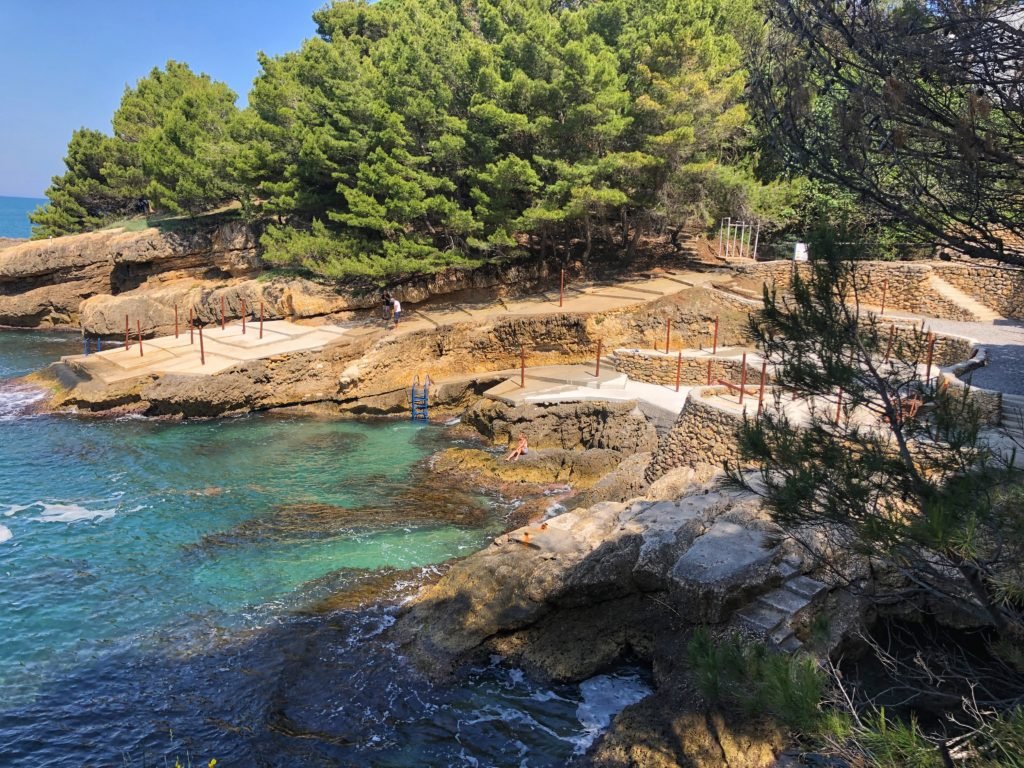
He clearly needed to visit the nearby Albatros Nudist Beach to let loose a bit. This is the type of “beach” quite common in the developed rockier coastlines of Montenegro. Cascading platforms of flowing irresistibly comfy… concrete pads. Our theory is they “purposefully” do not fill in the concrete pads with soft sand or pebbles to drive you into paying for a chair.
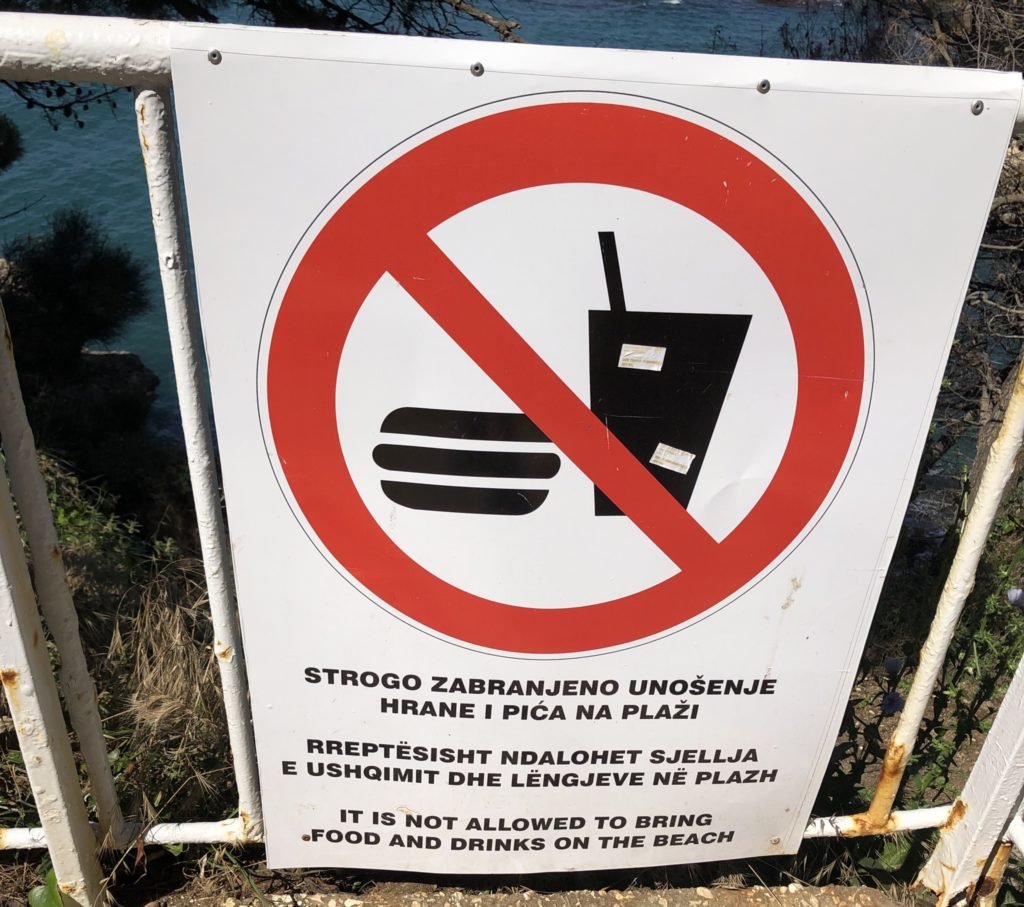
Just like you’re coerced into paying for food. No self-catering here!
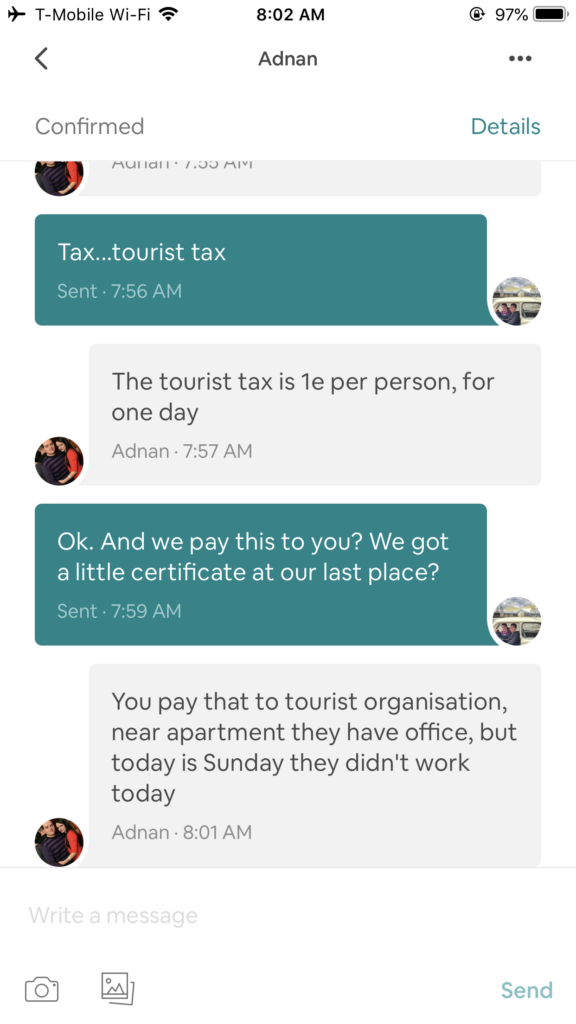
While we’re on the thread of questionable extortionary practices…in Montenegro there is also a very vague notion of a “tourist tax.” While there is nothing unusual nor particularly troubling about a “tourist tax” in general, in Montenegro they employ the practice to Kafkaesque levels. Most countries that we’ve visited that collect fees from foreign visitors either do so with a departure or entrance tax, or a visa, or some combination of the two. Not Montenegro. The “tourist tax” is assigned per person, and is attached to each person’s accommodation per night of stay in Montenegro, as they travel through the country.
Ok, maybe that doesn’t sound sooo odd… but here’s the wtf are they thinking part: you don’t pay at the border exit/entry. Noooo, that would make too much logical sense! You – the tourist – are expected to register and pay in-person at the visitor information center of each and every town where you stay a night to ensure you register and get your official receipt. You are expected to save these receipts and, if asked, produce them at the border when you leave the country. Additionally, to really cover your butt from breaking this tourist tax law you “have” to ask every single accommodation if the tax is included in your rate, (because it’s supposedly their responsibility to collect it too) and get a receipt from them to show at the border later. Some will just tell you to go to the tourist office (not the police like the UK/US tourism websites say) to pay it. (See the obscure exchange from one of our hosts.) The problem is, this office is often open erratic hours/ closed on Sundays. Besides, the first time we went through this ridiculous procedure we sat in an office waiting and filling out the required paperwork for 20 minutes, and our accommodation host had to verify our staying with her… what tourist is going to do this process every single time they change accommodation?!? (Which for us is frequent.) It’s insane. Incidentally, Greg asked at the tourist information how are we supposed to pay this tax if we are ‘wild’ camping or sleeping in a rental car, and the answer was “uhhhhh, well… that might be a hole in the law.” Of course with this level of inept bureaucracy on display for the tourist we quickly realized this was a big strike one for opening a tourism based business in Montenegro. There’s also a lot of fear mongering about this tourist tax on Montenegrin blogposts and tourism articles saying that if you don’t pay this tax, you might get held at the border and fined. In the end, we were told its unlikely this will happen so not to worry about it. It’s all horribly unclear, vague, and ridiculous.
Tip: if you do get stopped and questioned at the border about your tourist tax payments (or lack of) just use the loophole we discovered and say you slept in your rental car the whole time, or were camping in the mountains.
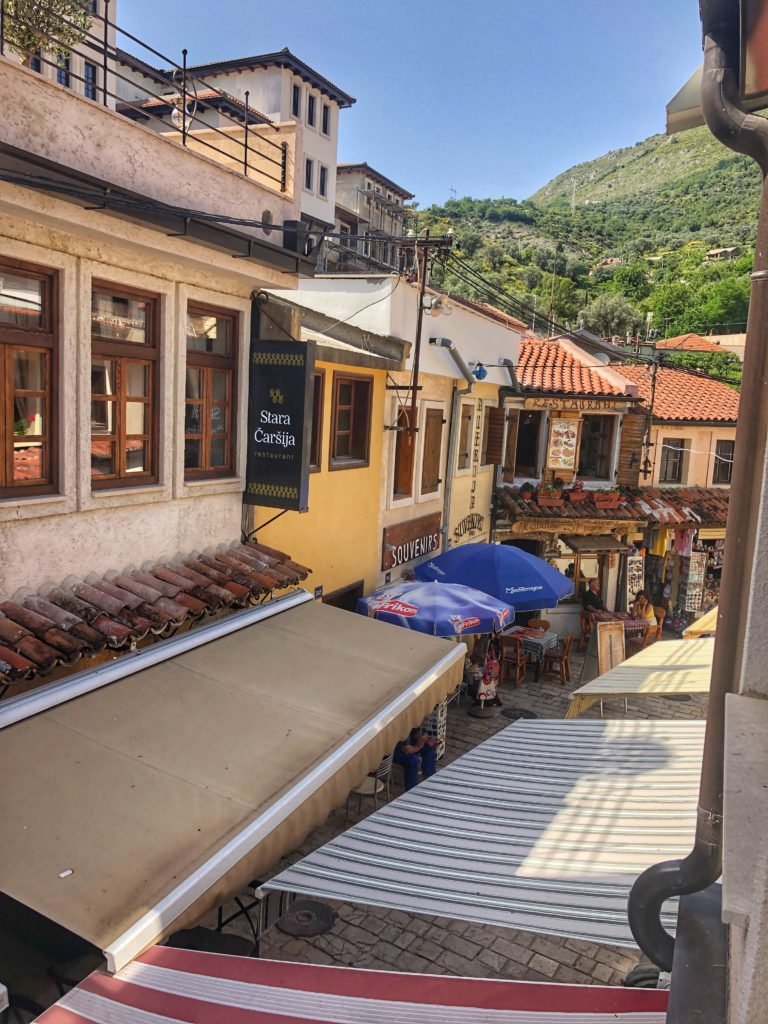
Rolling onward, we tumbled back down the mountain to the bus station. Buses in Montenegro commonly charge a 1€/bag (convenience???) fee to put your bags onboard, ala Ryan Air. Hmmm. Another irritating “fee” we’d yet to encounter anywhere else. Anyway, we were excited to move on up the coast to Stari Bar (Old Bar) for two nights. It turned out to be a nice little gem of a town, located about 4K inland from the ‘new’ Bar, which we read wasn’t too gem-y. In old Bar, we splurged ($32/night) to stay smack in the center of the old town Main Street. We rarely snag such prime and atmospheric real estate on our backpacker budget. We loved it! And, as an extra plus we were located directly above a souvenir shop selling the latest advancements in Montenegrin themed magnets, t-shirts, and shot glasses. It was fun to be amidst all the tourist hubbub for a change of pace.
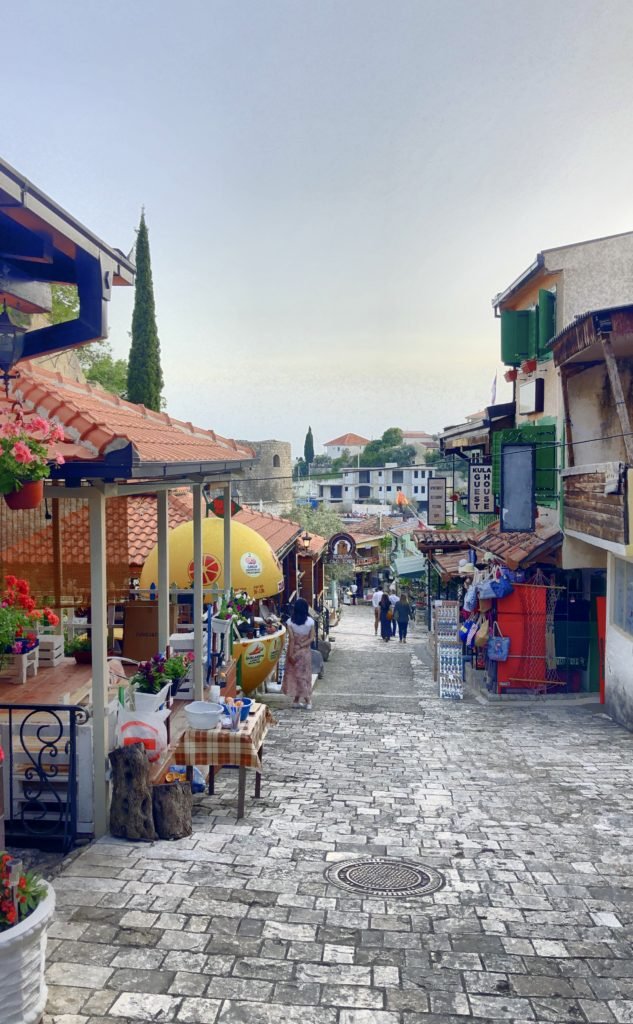
Fortunately Stari Bar is not yet completely inundated with tourists, although there were definitely a number of day trippers finding their way here on tours (somebody needs to buy those magnets!)

Omerbasic Mosque…from 1662 is also in Stari Bar. One of the loveliest mosques we saw in Montenegro. While Eastern Orthodox makes up the majority in Montenegro, about 19% are Muslim.

The Stari of Stari Bar has had is share of turmoil. Over the centuries it was captured by the Venetians, the Serbians, the Hungarians and the Ottoman Empire. The majestic and atmospheric castle (2€/ticket) now lies in ruins, has been undergoing many tactful restoration projects, and was certainly worth a couple of hours to wander through.
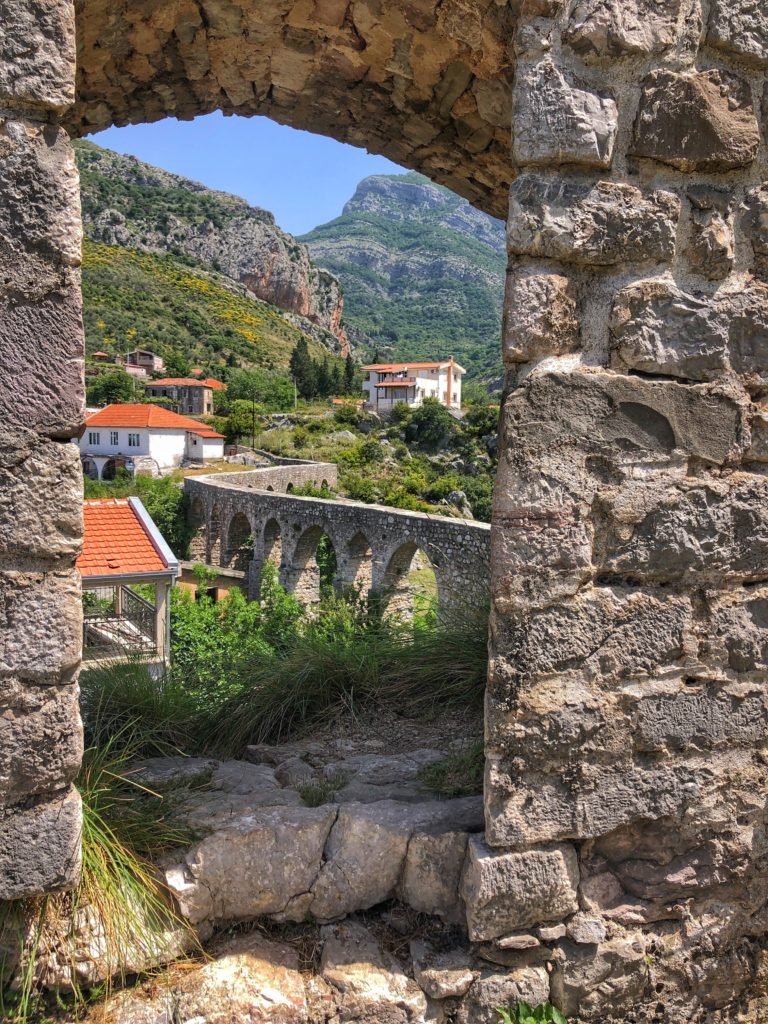
Stari Bar’s strategic position was obviously chosen far from the seashore due to its access to pure mountain springs that gush out from the limestone cliffs nearby. The area was lived in by the Illyrians from 2500 b.c. while old town Bar dates from the 10-11th centuries. Its 16th Century aqueduct is the only surviving one in Montenegro.
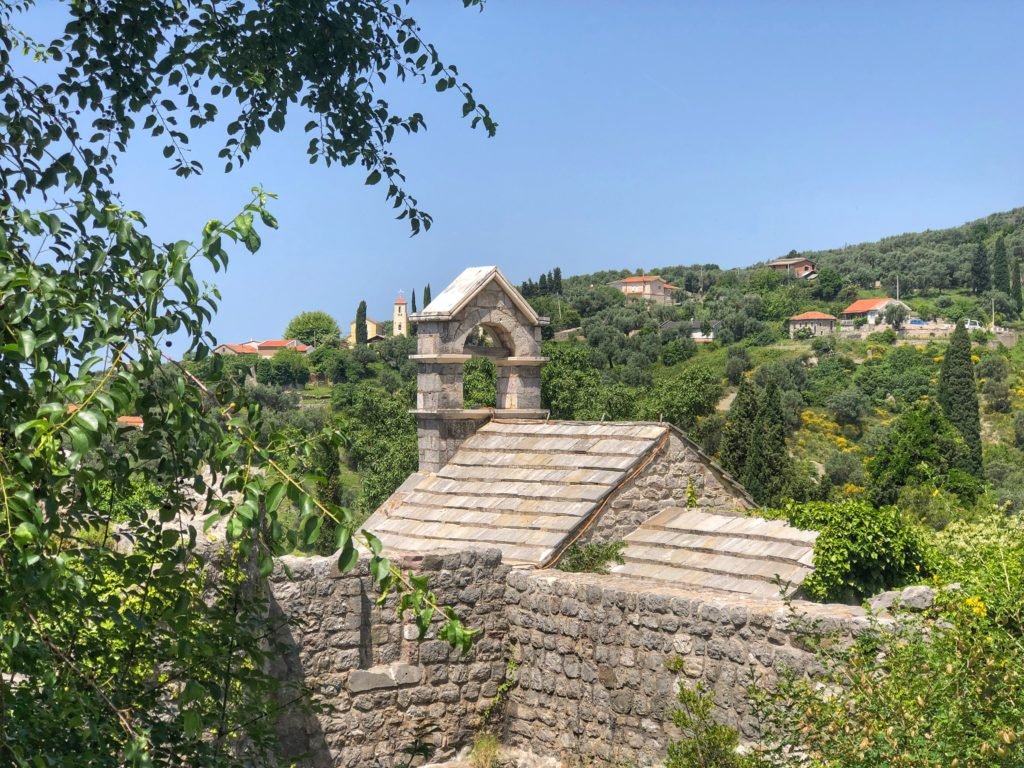
One of the surviving churches within the old Bar city walls.
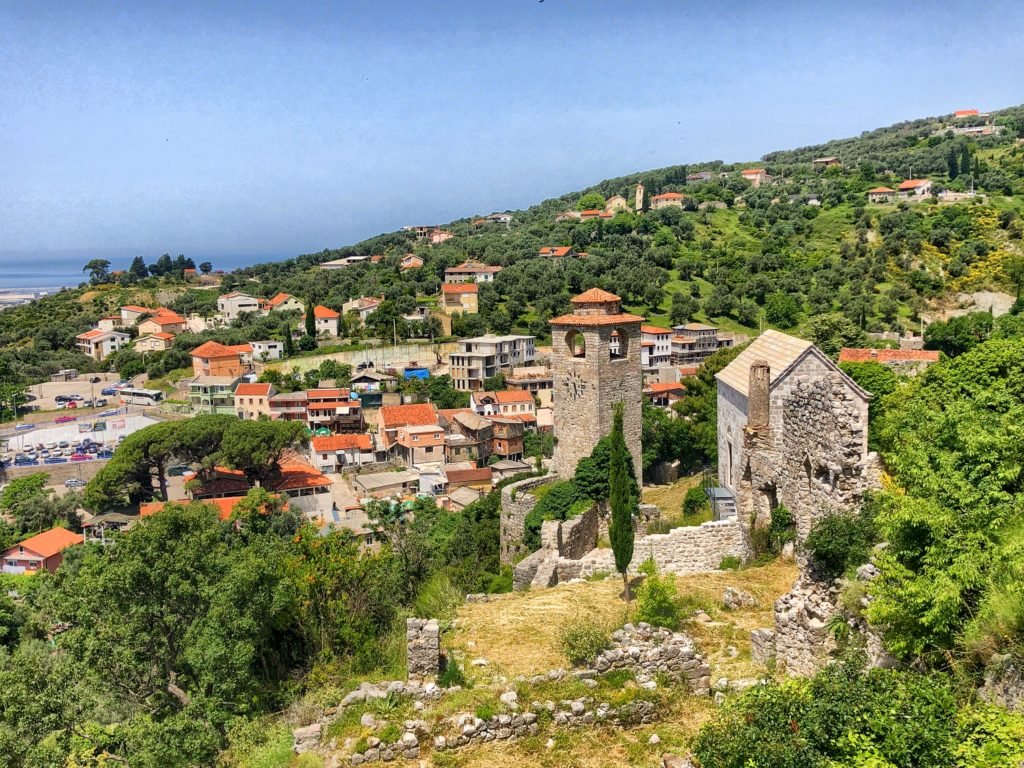
The view of the restored clock tower.
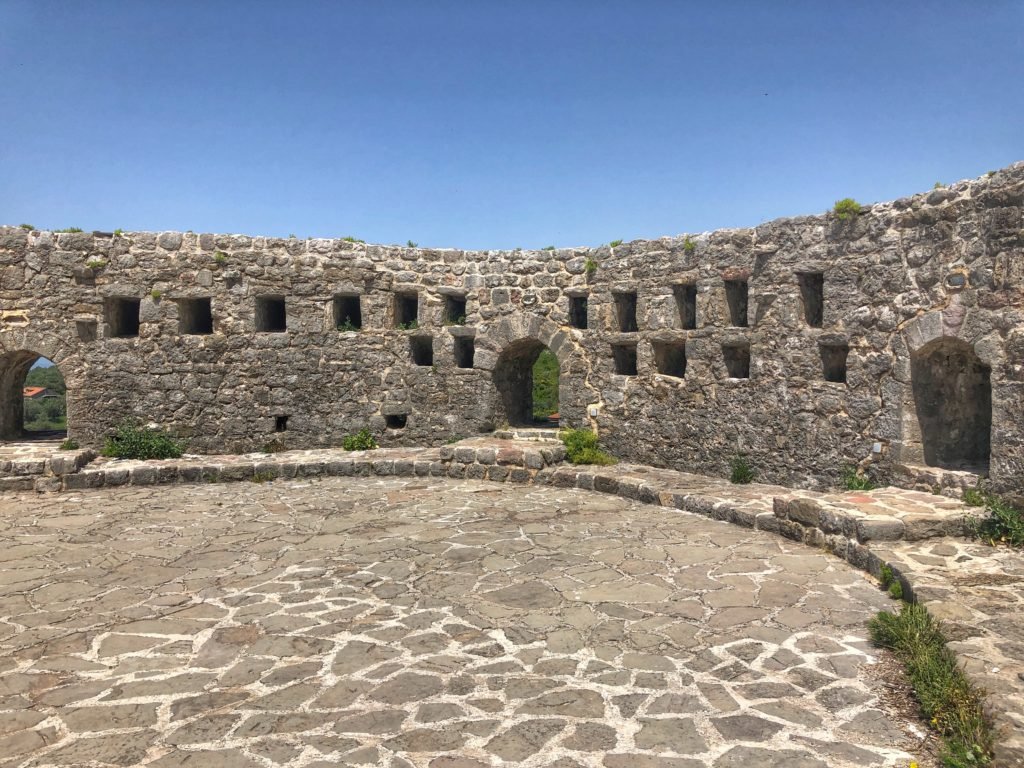
Inside the old town.
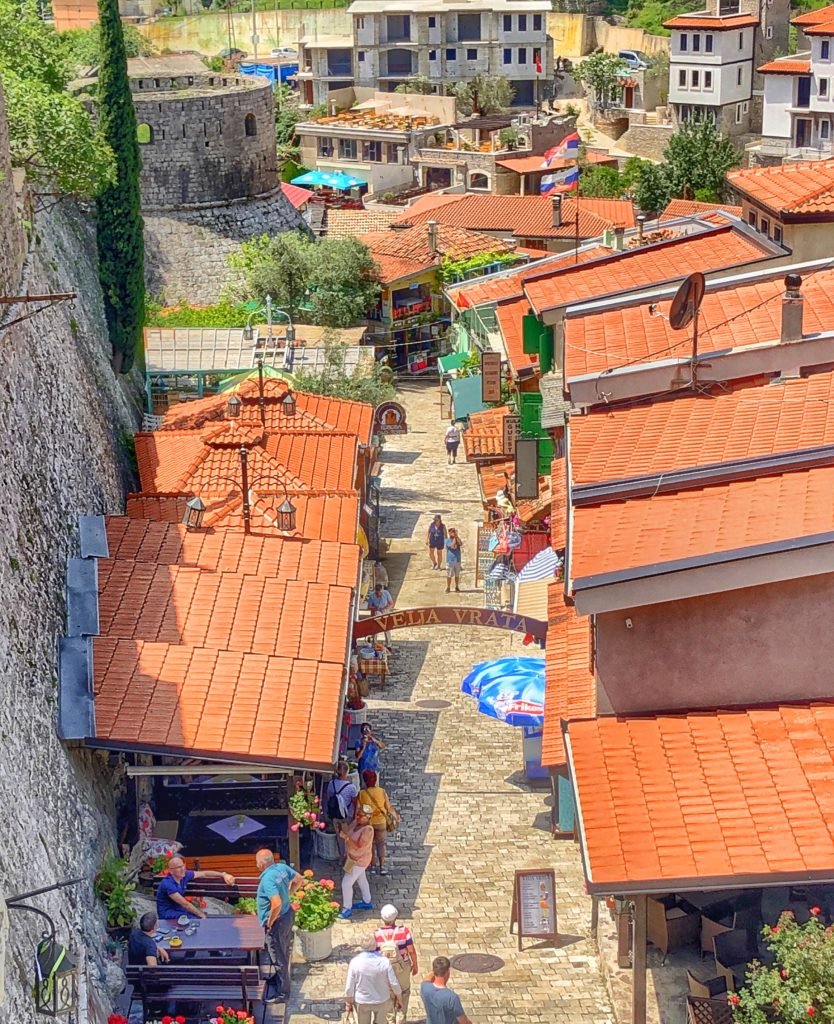
A view of the adorable cobbled Main Street from the fortress walls.
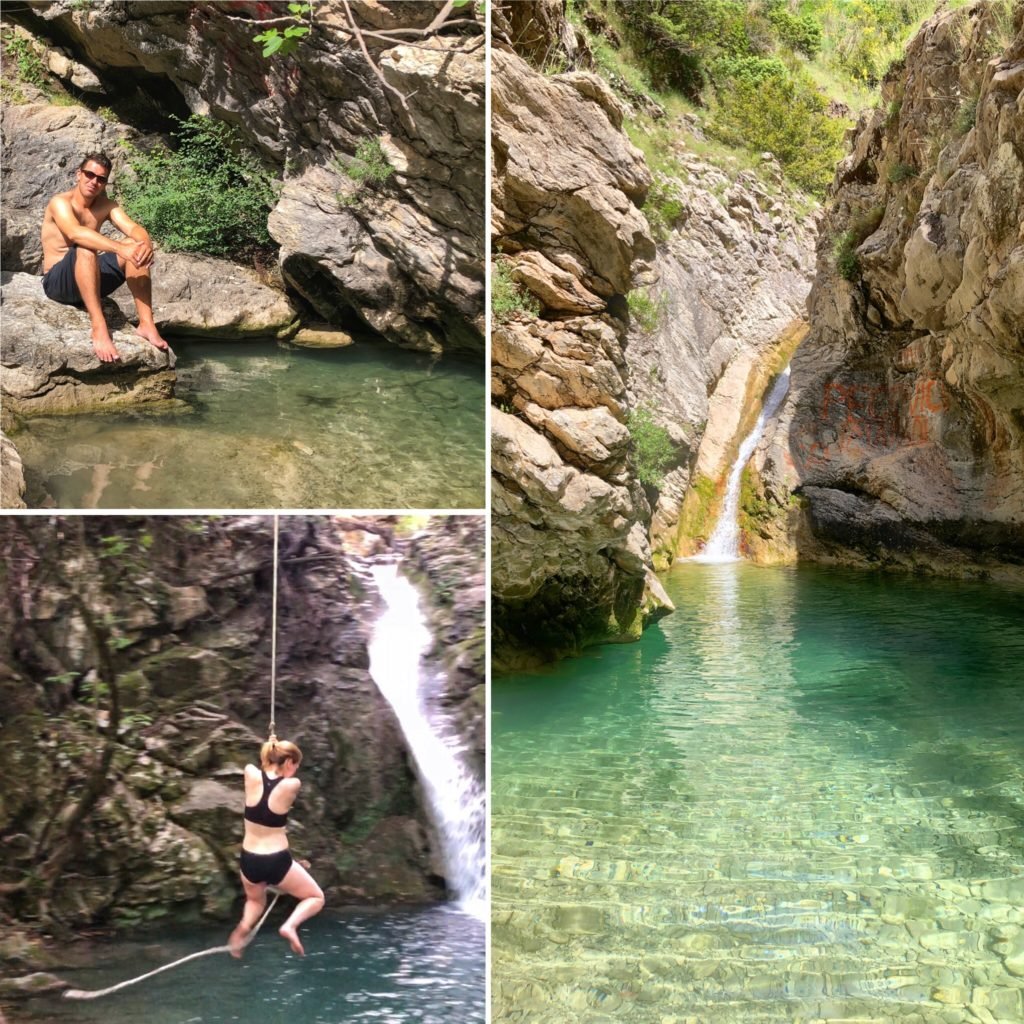
Although it was a lovely town and castle, we were anxious to seek something a little more off-the-grid from Stari Bar. Looking at our trusty Mapy.cz app to give us some guidance, we were thrilled to see many options nearby. Hiking uphill in a canyon NE about 2k from the edge of town, we found this secluded waterfall and swimming hole. After sweating like piglets, there was nothing better than hurling ourselves into the frigid water on a rope swing!

Waterfalls are plentiful in Montenegro… on the way back to Stari Bar we dropped ourselves into another little paradise-like swimming hole only about 1/2 km from town.
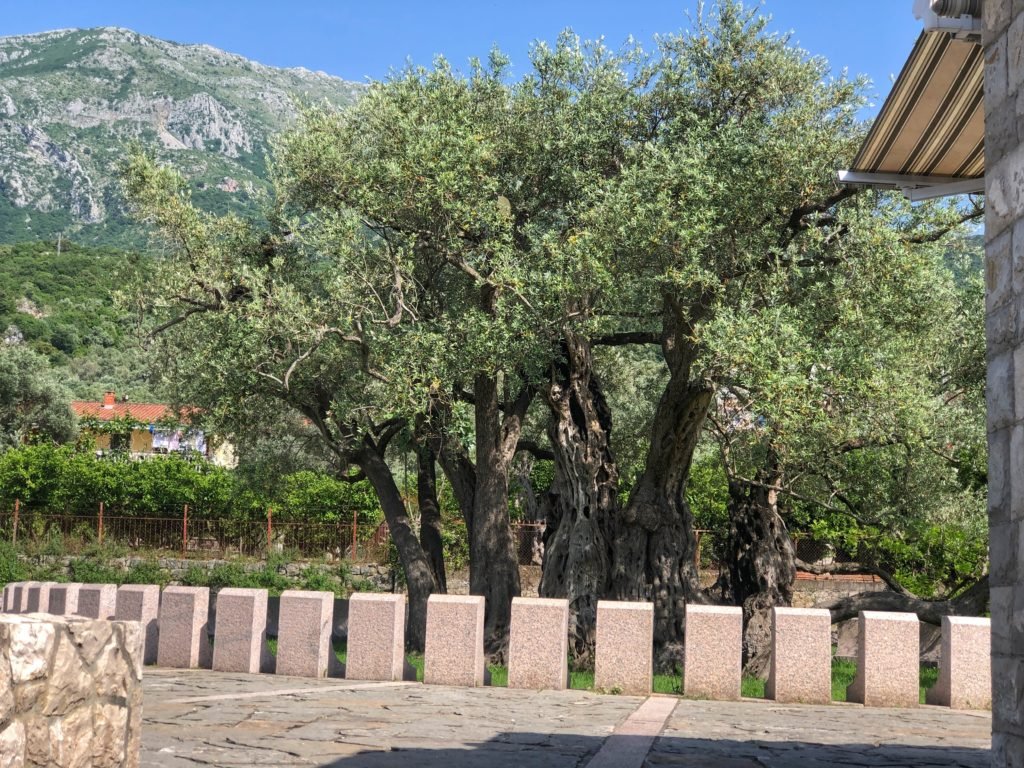
Another notable site we wanted to see in Stari Bar was the oldest olive tree in Europe. It’s an olive tree dating more than 2000 years old and has a circumference of 10 meters! Perplexingly, someone had decided that seeing this tree up close and personal should not be free. So, we just admired it from beyond the lovely gated enclosure.

A glowing Stari Bar sunset.
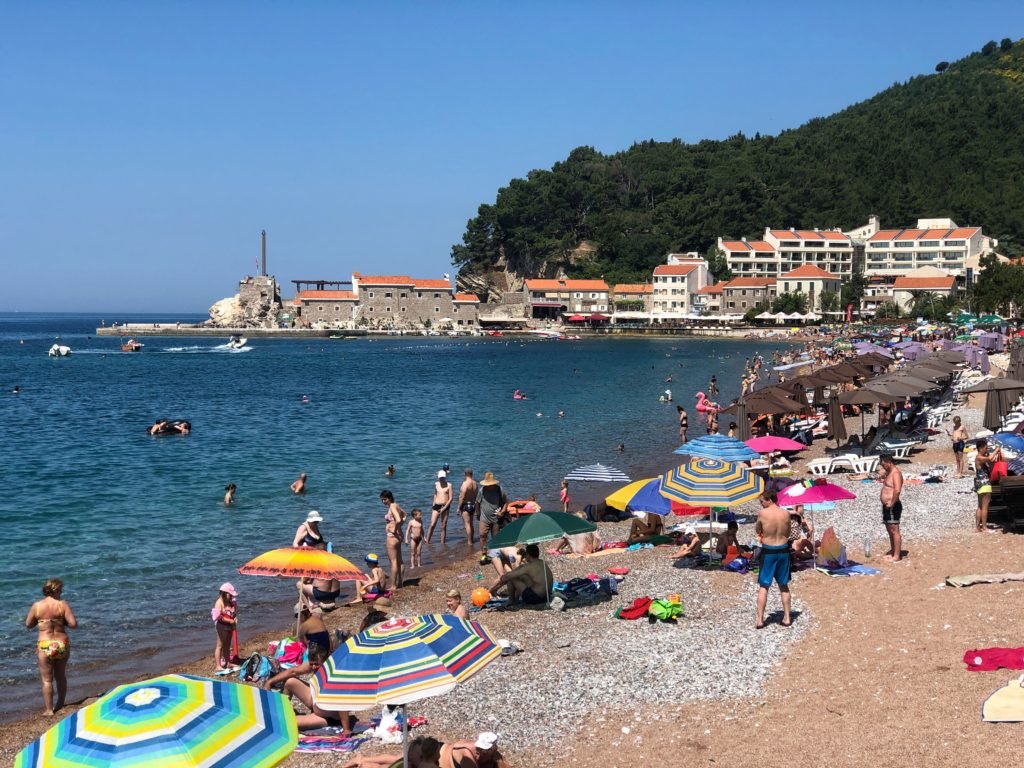
The Montenegro beaches have a different look and feel than those we visited in Albania. Petrovac, was our next stop heading up the coast, and school must be out for summer because they are now a family affair! It’s easy to see why they’ve come to this beach, though. The weather has finally shifted enough to gift us some super clear, super calm, and super temperate waters. Delightfully refreshing swimming here!
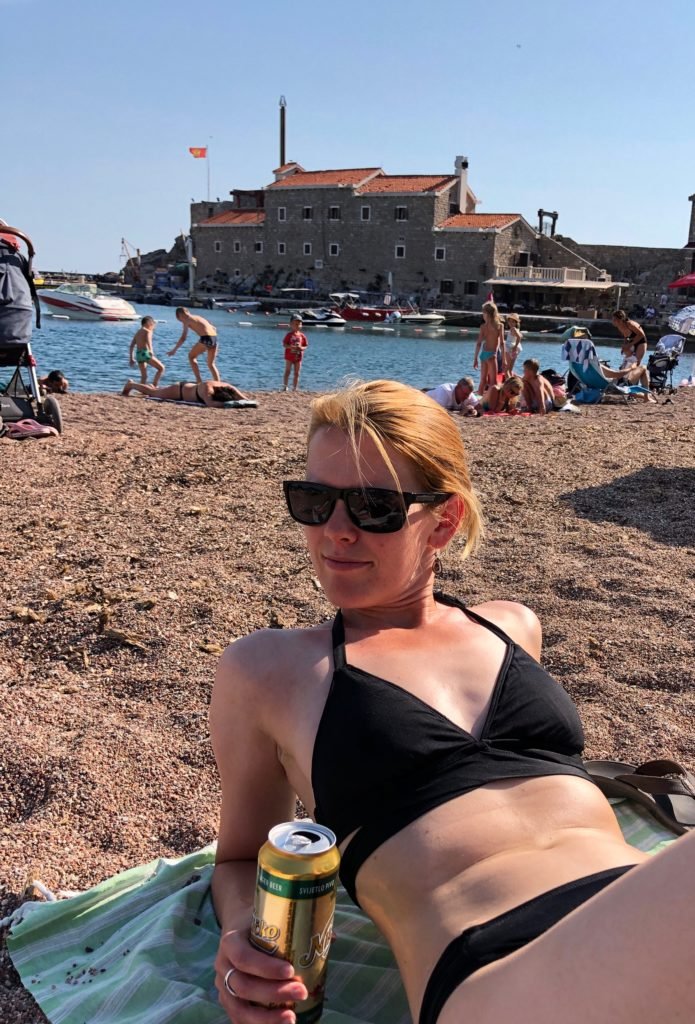
Mandy, who is usually a monochrome snowflake, works on addressing a problem she’s never had. Tan lines. With all the chaos however, we seem to have lost our opportunities for relaxing sun bathing.
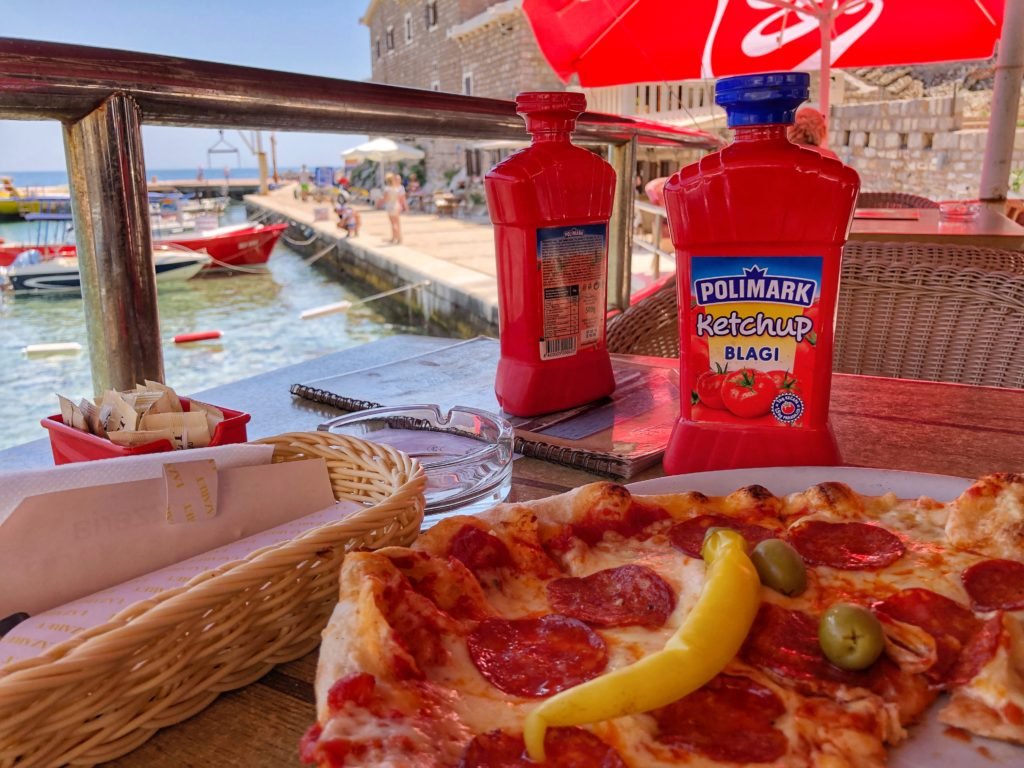
So we took a break for our go-to frugal meal out these days. A large pizza (7€) is always served with a side of ketchup(??) here, which locals drizzle over their pizza like we would our french fries. I mean, it’s not like pizza is already tomato-based. But then again, we’ve seen Americans do this with ranch dressing. So, who are we to judge?
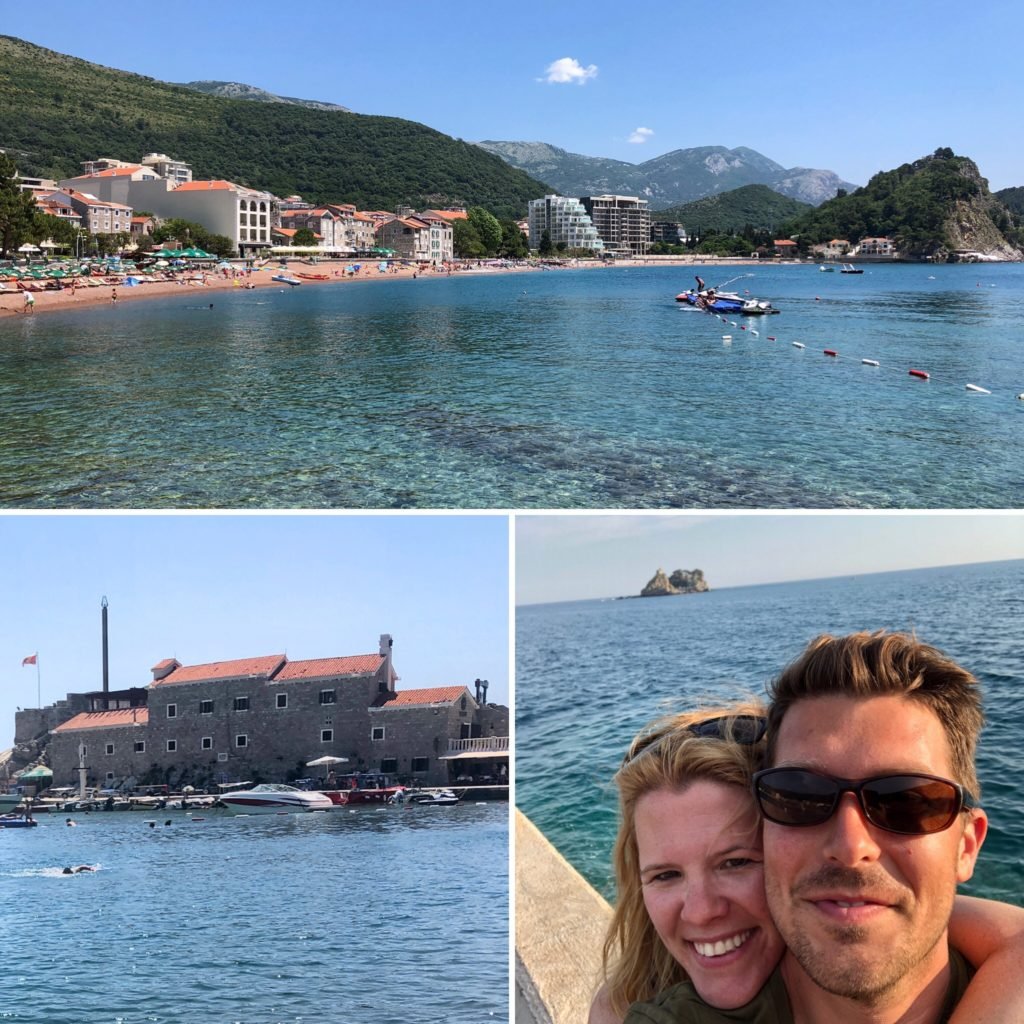
Views of Petrovac…Much of the town still has a local character but, much like a lot of the Montenegrin coast, the profiteering is coming. Promptly inserting itself into the background here.
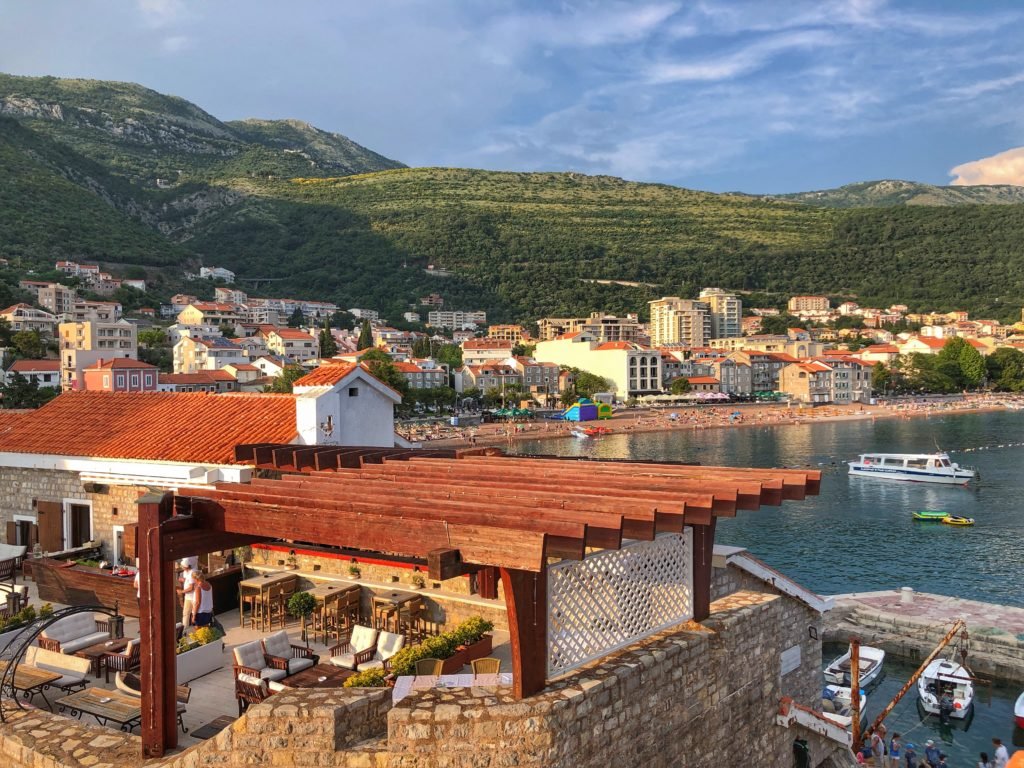
A view of Petrovac from its fortress tower.
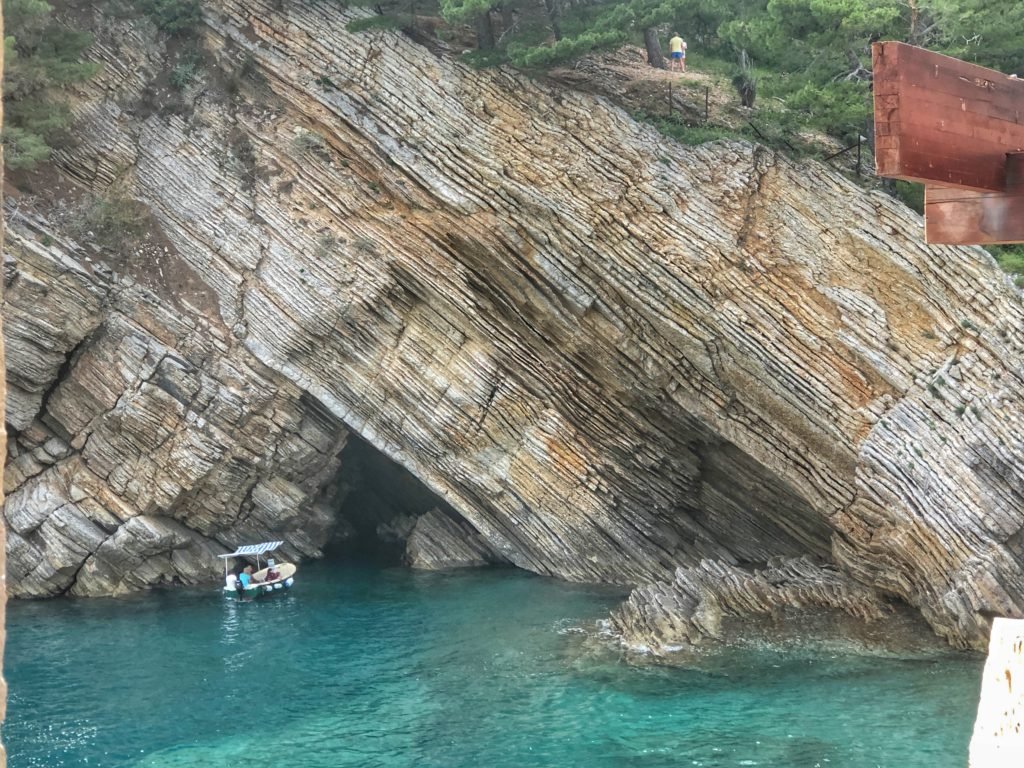
Like tiramisu, the layers of rock slide into the water were quite striking.
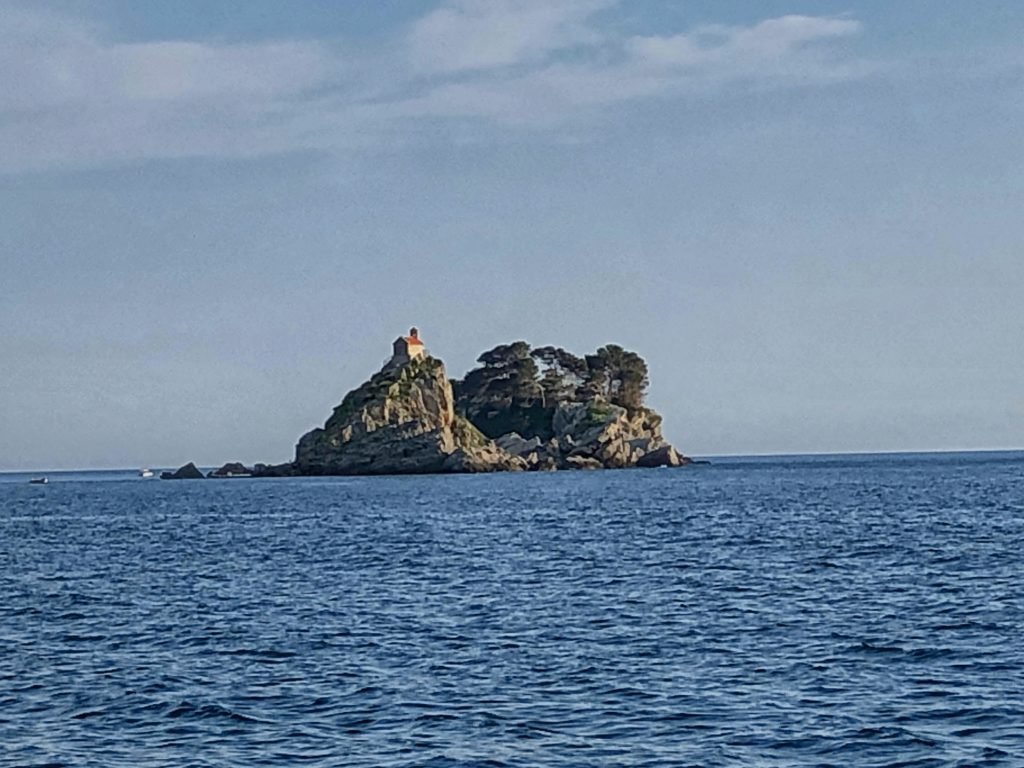
A tiny island with a quaint looking tiny church just offshore in the Petrovac bay. If you’re keen to see it up close you could either risk a swim of half an hour to it, or take a 10 minute water taxi for 50€! Ummm, we chose neither. Let’s see what Kotor has in store…

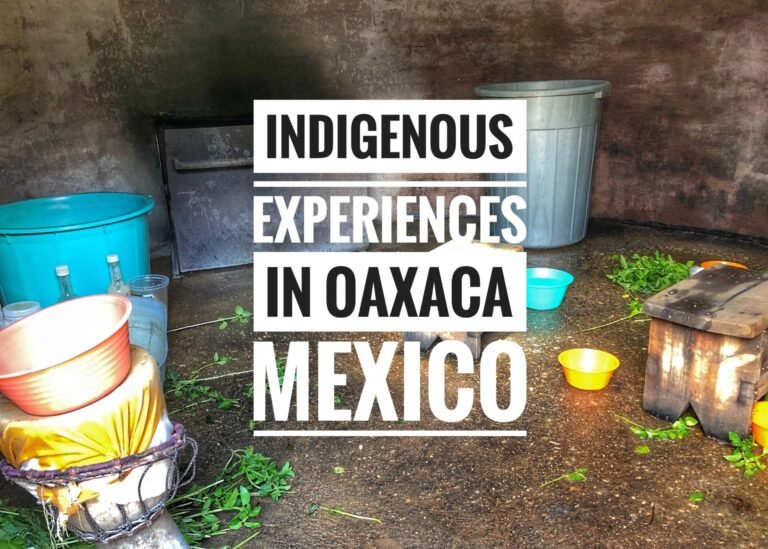
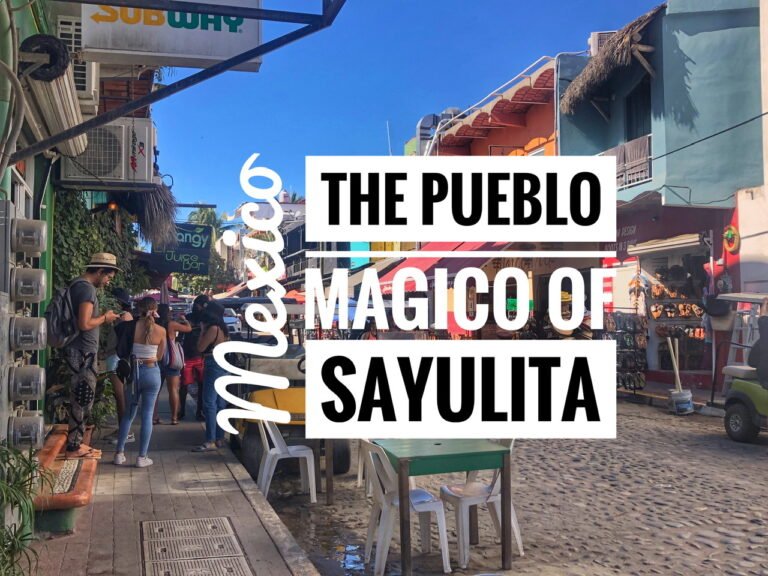
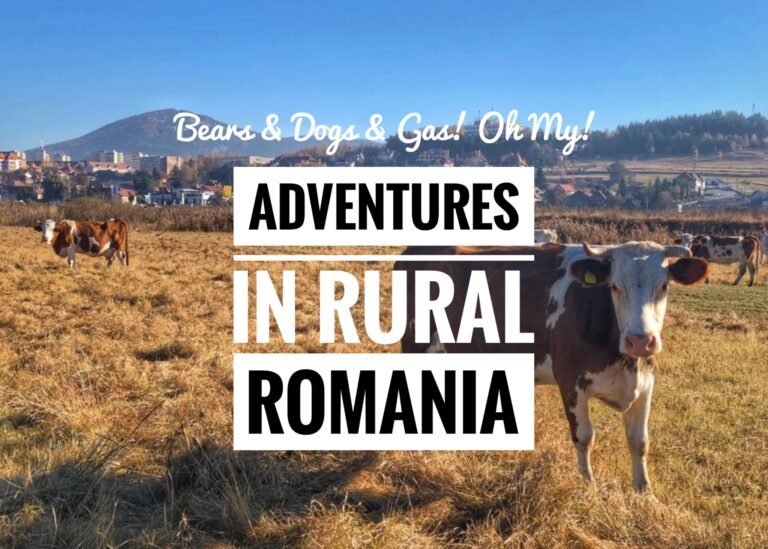
Awesome blog. Wonderful plCe.Glad you enjoyed it.
Thank you so much for the comment 😉
Your descriptions and pictures are excellent !!!
Thank you for reading and for the comment 🙂
Hah! My favorite part was that hidden swimming hole. Awesome!!
It was our favorite part as well 🙂